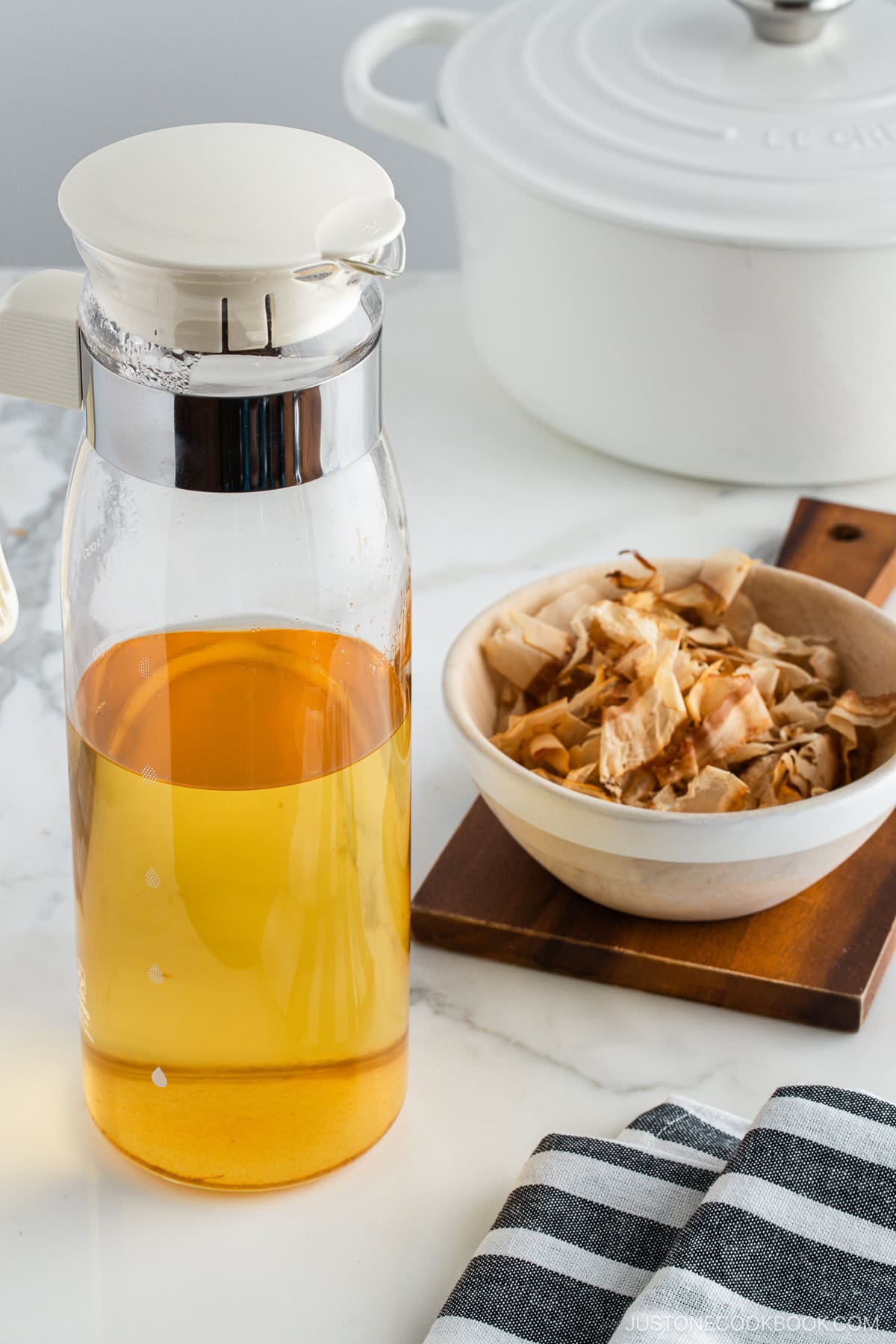
There are numerous methods and ingredients for making dashi, the Japanese soup stock that lays the foundation for many dishes in Japanese cuisine. I’ve shared many recipes for making different types of dashi (including vegetarian versions), but today I want to share how to make Katsuo Dashi (かつおだし).
What is Katsuo Dashi?
Katsuo dashi (かつおだし) is made from katsuobushi (かつおぶし, 鰹節), dried and fermented bonito/skipjack tuna that is shaved into thin flakes. In Japanese cooking, the distinct umami taste from katsuobushi plays an important role in heightening flavor and aroma.
Unlike other dashi ingredients such as kombu, iriko/niboshi (dried sardine/anchovy), and shiitake mushrooms, katsuobushi does not need soaking before making delicious dashi. In other words, you can start making katsuo dashi right away, and it takes less than 15 minutes to make a rich and savory soup stock.
How to Make Katsuo Dashi
Just like other types of Japanese dashi broth, katsuo dashi is so easy to make from scratch. Here’s a quick overview; find the full instructions in my recipe card below.
- Bring the water to a near boil.
- Add katsuobushi shavings to the water. Bring it to a boil, reduce the heat, and simmer for 30 seconds. Turn off the heat.
- Let it sink in the pot or saucepan. Strain through a fine-mesh strainer.
Just like that, you have beautiful, golden katsuo dashi! You can store the dashi in an airtight container like a bottle or mason jar. Keep in the refrigerator for 3–5 days or in the freezer for 2 weeks.
Reserve the used katsuobushi to make furikake (Japanese rice seasoning).
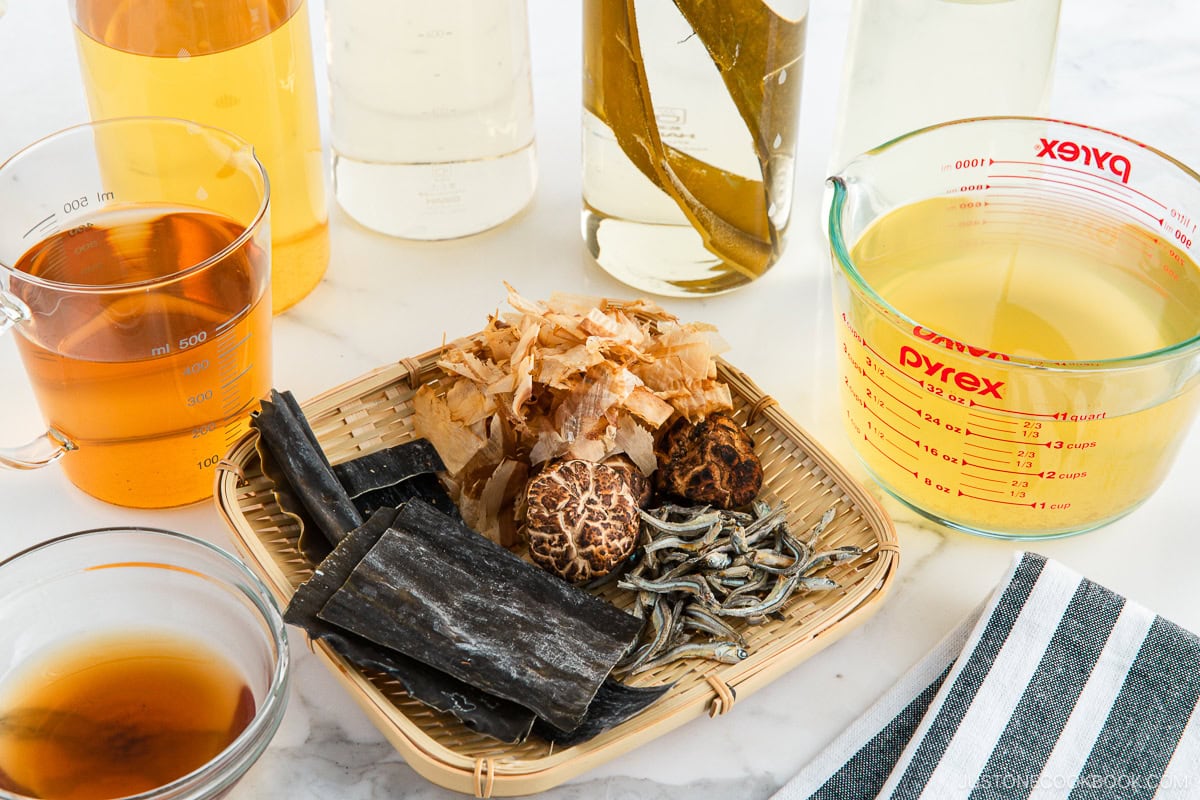
Recipes Using Katsuo Dashi
For an umami flavor, you can swap katsuo dashi in recipes like miso soup, ramen broth, udon noodles, nimono, and dipping sauce. Below are Japanese food recipes that specifically call for katsuo dashi:
The Ultimate Dashi Guide
Dashi is the master flavor enhancer in Japanese cooking, so you don’t need to season the food with too much salt, fat, and sugar. Its function is as indispensable as cooking oil, so anyone who is keen to cook authentic Japanese dishes at home will have to get started with dashi.
There are six different types of dashi you can use in Japanese cooking, including vegetarian and vegan dashi (*).
- Awase Dashi – a stock made from a combination of dried kelp + bonito flakes
- Kombu Dashi * – a stock made from dried kelp
- Katsuo Dashi – a stock made from dried bonito flakes
- Iriko Dashi – a stock made from dried anchovies/sardines
- Shiitake Dashi * – a stock made from dried shiitake mushrooms
- Vegan Dashi * – a stock made from dried shiitake mushrooms and kombu
If you are new to different types of dashi, check out my Ultimate Dashi Guide.
Katsuo Dashi (Bonito Stock)
Ingredients
- ⅔ oz katsuobushi (dried bonito flakes) (2 cups; packed)
- 4 cups water
Instructions
- Gather all the ingredients.
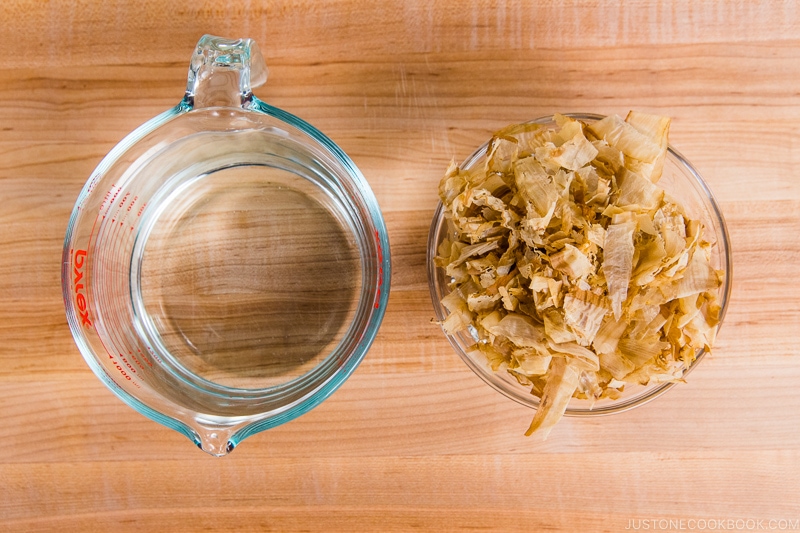
- In a medium pot, bring 4 cups water to a boil.
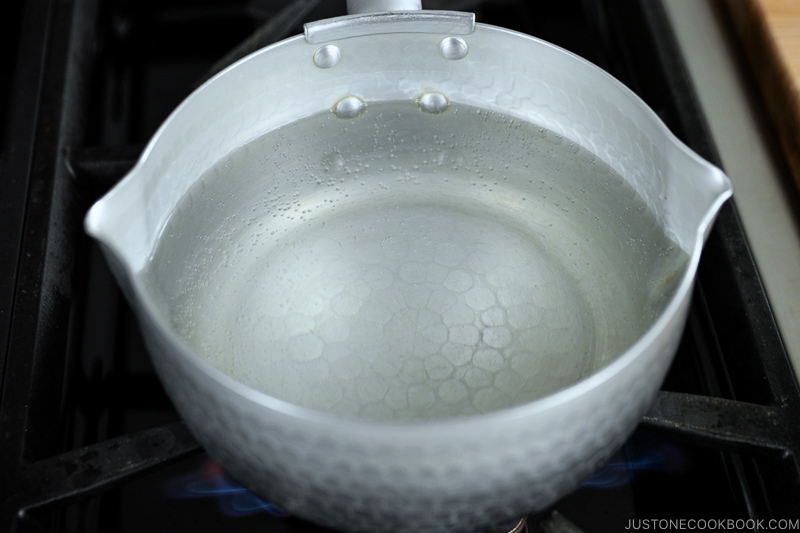
- Just before the water starts boiling, add ⅔ oz katsuobushi (dried bonito flakes) and bring it to a boil again, skimming occasionally.
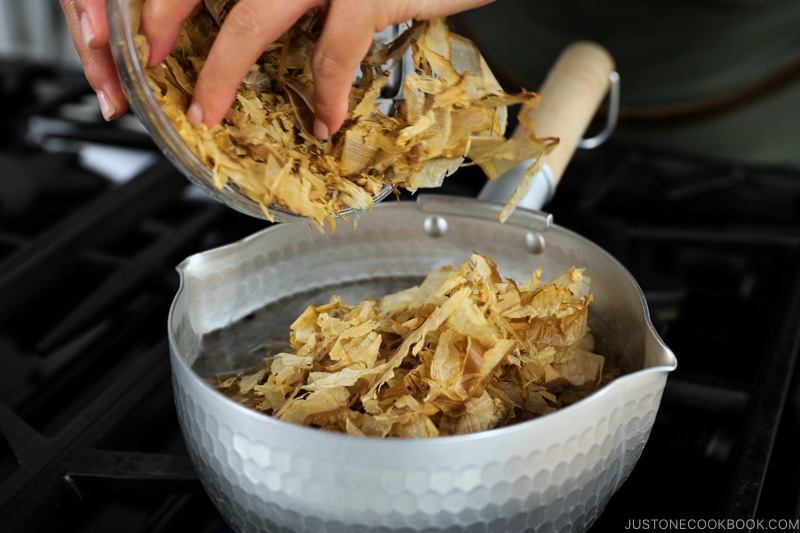
- Once the water is boiling, reduce the heat, simmer for just 30 seconds, and turn off the heat.
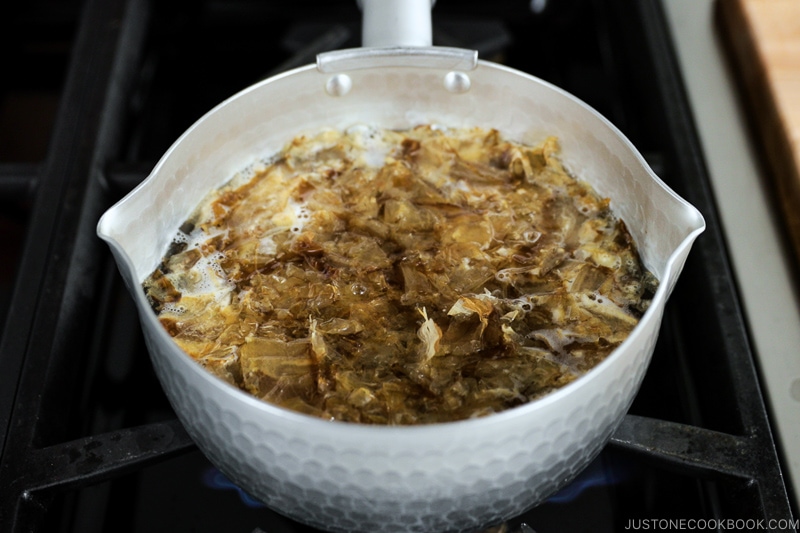
- Let the katsuobushi sink to the bottom, about 10 minutes.
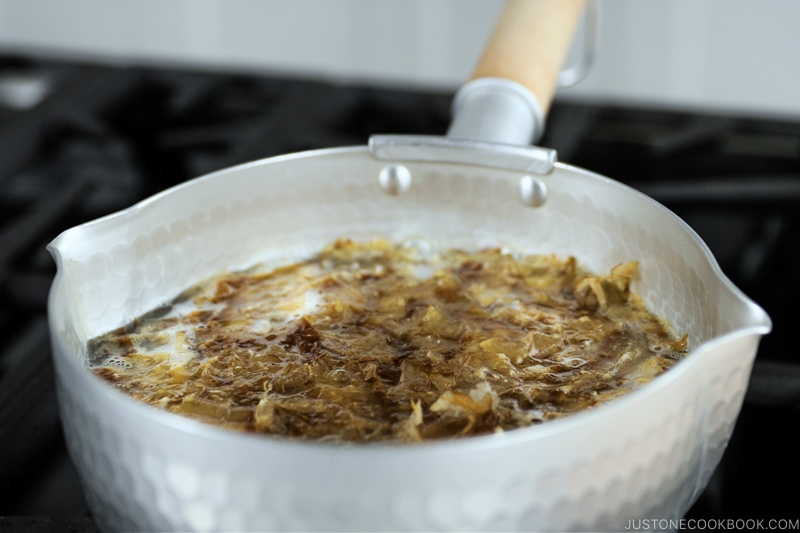
- Strain the dashi through a fine-mesh sieve over a bowl or measuring cup (reserve the spent katsuobushi and see below for what to do with it). Your Katsuo Dashi is ready to use.
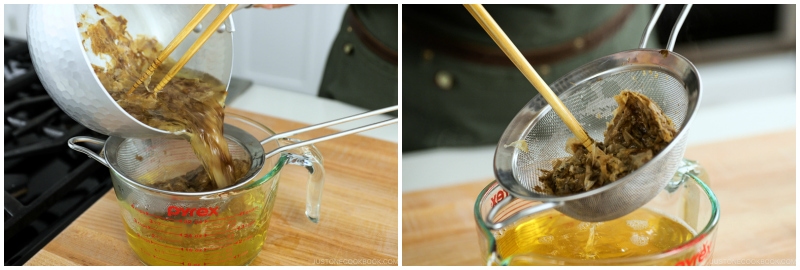
To Store
- If you are not using the dashi right away, store the dashi in a bottle or mason jar and keep in the refrigerator for 3–5 days or in the freezer for 2 weeks.
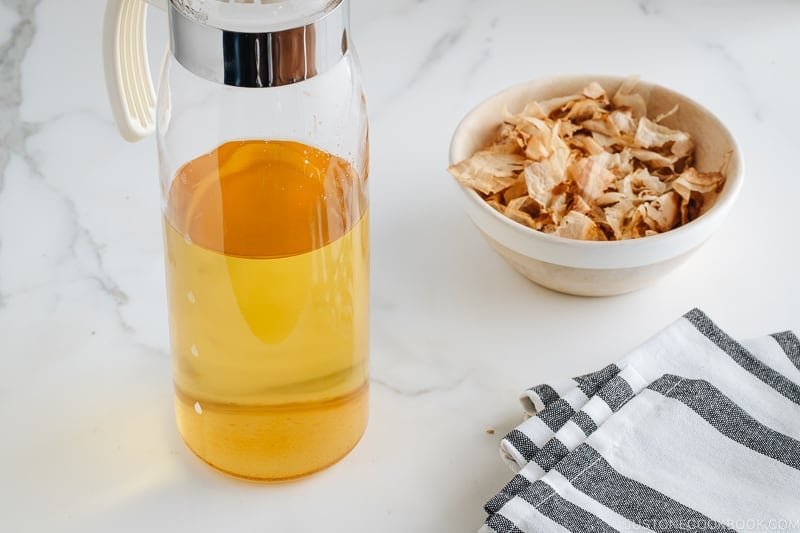
What to Do with Used Katsuobushi
- Save the drained katsuobushi to make Homemade Furikake rice seasoning. If you don‘t use it right away, you can freeze it for 2–3 weeks.
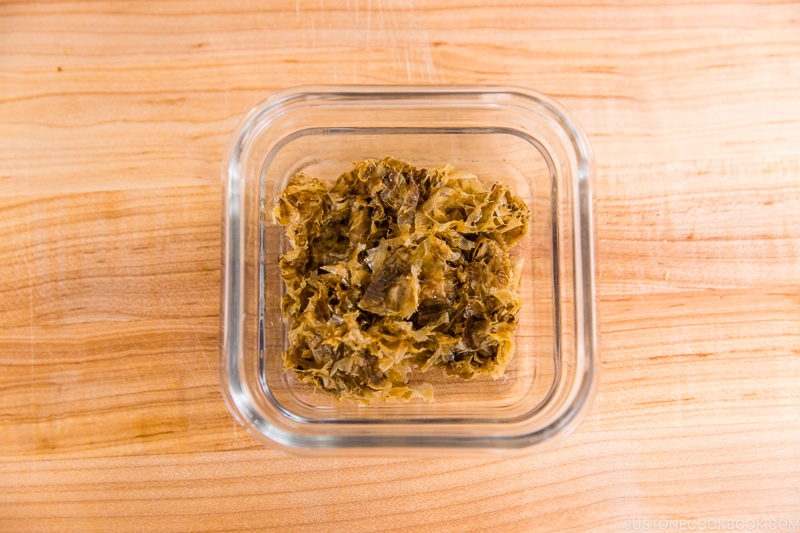
Nutrition
Did you make this recipe?
Tag @justonecookbook on Instagram so we can see your delicious creation!


